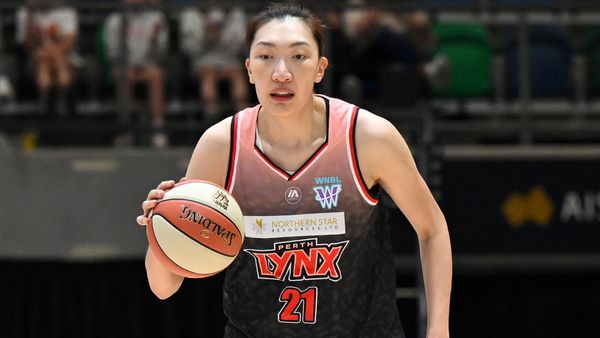
The Oscars’ red carpet isn’t what it used to be. Thank goodness. Because what it used to be was a straight-up beauty contest. Never mind that this was a roster of talented, hard-working women with the resilience to achieve success against the impossible odds of Hollywood – come the Academy Awards, the pretty ladies were lined up Miss World-style to be judged on how hot they looked in a corset-boned gown, while the men got on with the important stuff, like collecting awards for best director.
The red carpet is now a spin-off entertainment industry in its own right. It is an effective platform to tell the world a story about who an actor is, as Lily Gladstone did, honouring her position as the first Native American nominee in her category with a dress co-designed by Gucci creative director Sabato De Sarno and Indigenous artist Joe Big Mountain, with traditional “quillwork” embroidery on the neckline and velvet cape. It can also be an extremely well paid side hustle: Emma Stone is thought to be paid around $2m a year by Louis Vuitton, which dresses her for all major appearances. This Oscars was not the finest hour for this particular partnership: Stone’s mint-green peplum gown made news for the wrong reasons when the zip broke as she walked to the stage to collect her statuette.
Dresses have got more interesting. Commentators need new talking points, now that rhapsodising about how flattering a colour is to the skin tone or praising the bounciness of a blow dry is considered a little passé, and after the trend for high-definition closeups on manicures was mercifully put out of its misery. The people being photographed have wised up to the benefit of choosing fashion that has a story, giving online chat something to hook on to. Blunt’s Schiaparelli dress, engineered with straps that levitated several inches above her shoulders and embellished with what appeared to be the outline of a pair of men’s Y-front pants, was a case in point.
Fashion brands spend more than ever before on dressing celebrities. The television audience for the Oscars may not be what it was, but social media has given a long tail to the night’s defining images, and the social media landscape is ruled by celebrity. Basically, the budget that used to be spent on paying supermodels and photographers to make adverts which were then displayed at great cost as double-page advertisements in glossy magazines has been redirected to paying famouses to wear stuff. But this is a complex business, and savvy nominees are not at the beck and call of the highest bidder. Blunt, for instance, has a contract with Tiffany, and will be handsomely rewarded for modelling the 700-diamond necklace she wore to the ceremony. Her Schiaparelli dress was probably chosen in part because those floating straps neatly drew attention to the necklace, and matching six-carat earrings.
Even before the awards were handed out, the buzz from the red carpet suggested that this would be Oppenheimer’s night. Now that the red carpet is less of a winner-takes-all beauty pageant, there is room for teamwork on behalf of a film. The noise around both Barbie and Dune: Part Two was successfully amplified by orchestrated, strategic red carpet dressing – Ryan Gosling did the hot pink heavy lifting on behalf of Barbie in his Marilyn Monroe-inspired riff on I’m Just Ken – and for the biggest awards show of the season many of the Oppenheimer stars were dressed in synergy, as if for a very fancy science-college prom. Cillian Murphy’s Versace tux was accented by a gold brooch by Hong Kong brand Sauvereign, which explained in a statement that the design’s eight concentric trapeziums mimic “the shape of interior components in Oppenheimer’s history altering invention”. Blunt’s gravity-defying dress was echoed in a remarkably similar one for Florence Pugh, which was made by the Milanese brand Del Core. Pugh’s shoulder straps, like Blunt’s, floated a few inches above her shoulders. A nod to Oppenheimer’s audacity with physics, perhaps. Or a reference to the Oscars, where – as so often – the film with the most successful formula was the one that aimed itself just a few inches above mass tastes. Either way, these days the best dresses have a substantial role in the plot, meaning the red carpet has seen more appearances by quirkier, less traditionally glamorous brands such as Schiaparelli, Loewe and Balenciaga, alongside heavyweight hitters like Dior.
The power of talking-point fashion on the red carpet can also be seen in Chanel stepping outside its comfort zone of understated elegance to dress Billie Eilish in a tongue-in-cheek take on their traditional tweed suit. Chanel has wised up to the fact that Eilish, who wore white knee socks and strappy Mary Janes instead of evening sandals and accessorised her tailored black jacket with an Artists4Ceasefire pin, will win them more social media likes than any number of minor starlets in safe gowns.
Read more about the 2024 Oscars:
• Here’s our news wrap and full list of winners – now read Peter Bradshaw’s verdict
• Al Pacino, British mothers and a codpiece envelope: the real winners and losers of the night
• Relive how the ceremony unfolded with our liveblog and get up to speed with the top viral moments and the best quotes of the night
• Have a gander at how the stars looked on the red carpet and at the show







